Did you know that the Rideau Lakes community is awash in Irish heritage? Not only did Irish workers risk their lives to build the Rideau Canal, but Irish immigrants settled here more than two centuries ago to farm, labour, worship and build communities. Keep reading to learn about historical sites, landmarks and more Irish history.
If you're looking for events that will bring you the luck of the Irish, check out what’s going on around the township:
St Paddy’s Dance at the Portland Legion
Royal Canadian Legion Branch 231 in Portland is hosting a St. Patrick’s Day dance on March 23, 2025 at 1 p.m. so get your dancing shoes on and come out to enjoy music and friends.
Go green in the library’s MakerSpace
On Saturday, March 15 get green with Emma in the Rideau Lakes Public Library’s MakerSpace at the South Elmsley Branch! Pop by for a lucky visit from 9:30 a.m. to 12:30 p.m.
Time to get the green out at the Westport Legion
Celebrate St. Patrick’s Day at Royal Canadian Legion Branch 542 on Friday, March, 14 2025 with live music, Irish stew and prizes. Dinner is served from 5 p.m. to 7 p.m. with music from 6 p.m. to 9 p.m.
South Elmsley St. Patrick’s Day dinner
Come and join the South Elmsley and Area CEC as they host a St. Patrick's Dinner on March 15 from 1 p.m. to 5 p.m. at the Ronald E. Holman Municipal Complex. Irish stew and biscuits are on the menu - photo booth available.
This Irish heritage is honoured with historical sites and still tangible with lasting buildings and traditions throughout the region. Plan a visit to landmarks that recall Irish Heritage in Rideau Lakes!
Mission on the Mountain
As Irish immigrants began to call Rideau Lakes home, travelling priests provided religious services to the community. The first Catholic church in the township was built off of Parish Road in 1840 on land donated by an immigrant hailing from Northern Ireland. The log structure became known as the Mission on the Mountain. Now, surrounded by serene evergreen forest, a large stone cross stands at the site to commemorate the church, associated school and its Irish heritage. Sit on the bench and quietly ponder the heritage here.
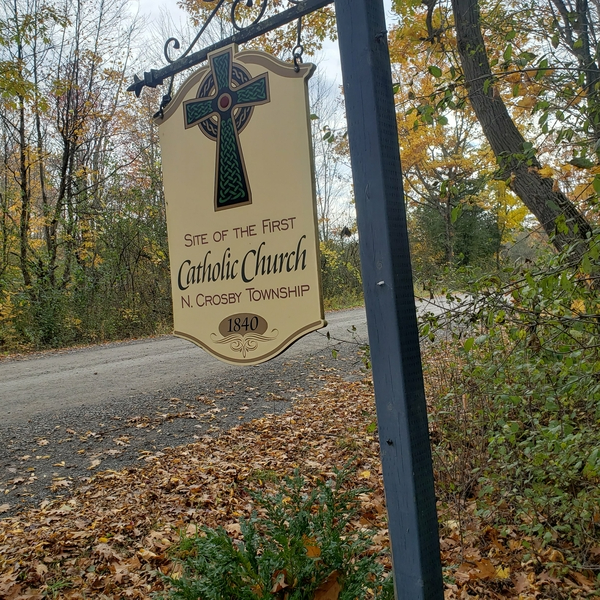 Photos by Rosanne Lake
Photos by Rosanne Lake
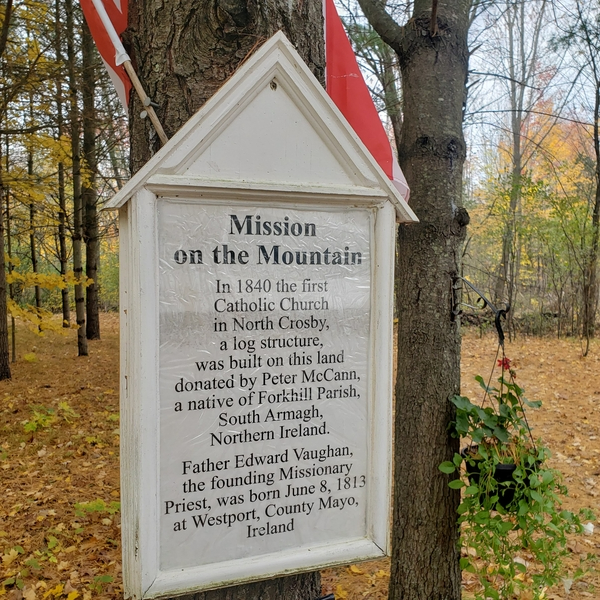
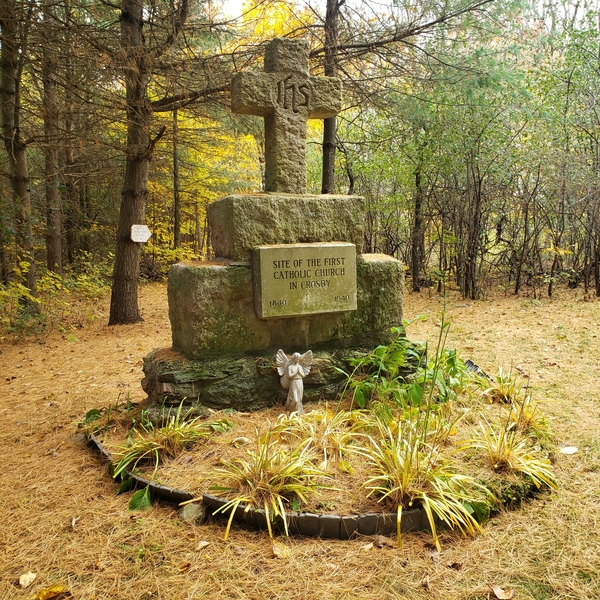
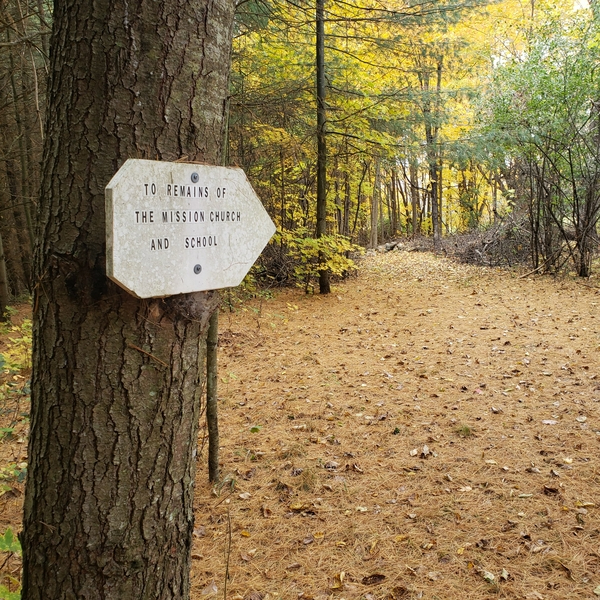
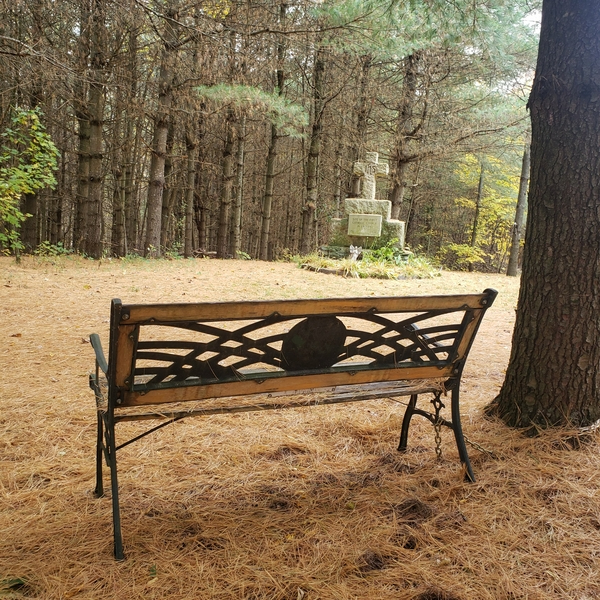
Royal Sappers and Miners Cemetery
The Cemetery near Newboro commemorates the 7th Company of the Royal Sappers and Miners, as the special constructions corps of the British Army who assisted in the completion of the canal at the Isthmus. They were skilled craftsmen from Ireland, England and Scotland. This is the only section of the Rideau Canal beyond Bytown (Ottawa) that was built under direct military supervision. The Isthmus marks the divide between the Rideau River flowing north to Ottawa and the Cataraqui system flowing south to Kingston – a key component of the Canal. The cutting of the channel in the Isthmus between Mud Lake (now Newboro Lake) and Rideau Lake proved deadly. Malaria was devastating during the summer of 1828, with many labourers, women and children dying here from the disease. To make matters more difficult, the Precambrian granite rock was challenging to cut through. Two different contractors attempted it, using hammer, iron rod and black powder, but failed – most of the workers actually left the site due to fear of the illness anyway.
Without other options, the military was called in to finish the job, with 57 men of the 7th Company Royal Sappers and Miners, along with about 250 labourers, sent to the Isthmus in 1829. The camp at the Isthmus continued to provide the technical and physical engineering on the Rideau until 1857. It grew into the village of Newboro and, according to the Rideau Lakes website, these soldiers and labourers, along with their families, also settled in North Crosby. The historic Royal Sappers and Miners Cemetery, west of the village, is the resting place for several of the soldiers. According to info from the Royal Sappers and Miners Cemetery Restoration Committee, records reveal that 13 Royal Sappers and Miners died while working on the project at the Isthmus, along with civilian workers. They were buried at this cemetery with simple wood markers and unidentified field stones denoting the grave sites. These were either removed or disappeared, resulting in an area of open grassland in the centre of the site. However, there is an ordnance stone left there used in the initial survey of the Canal two centuries ago. After the cemetery deteriorated and sat idle for more than 100 years, a Township of Rideau Lakes initiative with a group of local volunteers formed the Royal Sappers and Miners Cemetery Restoration Committee to restore the abandoned burial site. Thousands of volunteer hours have since been put into cleaning up the site, restoring gravestones, researching the soldiers’ details, creating visitor information, as well as plotting the site and maintaining it for visitors to learn from and enjoy. It’s truly a rich part of Rideau Lakes – and Canadian - heritage.
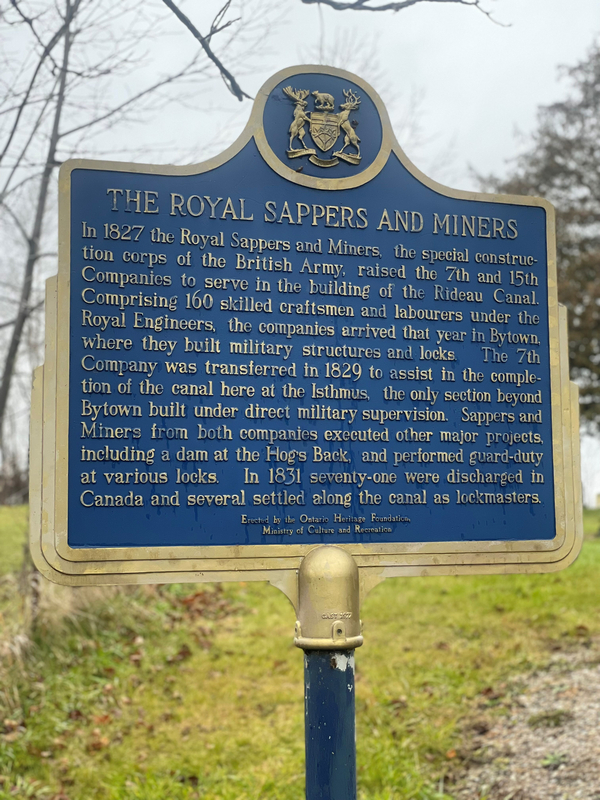
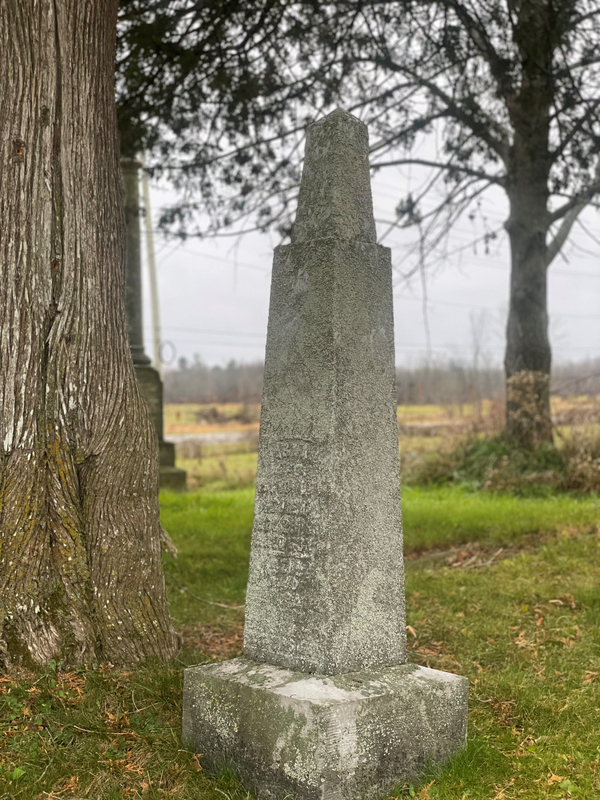
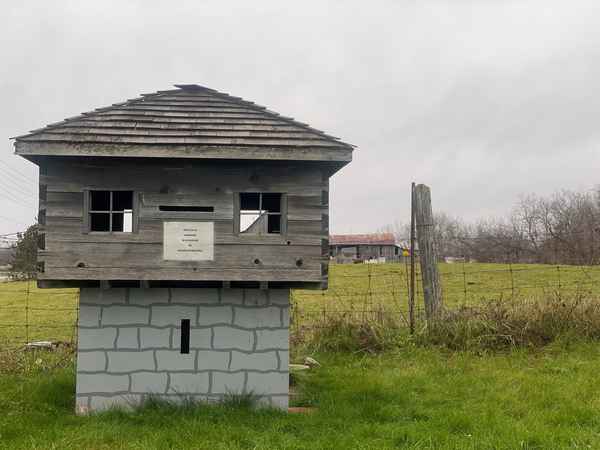
Canal considerations: The Irish Creek Route
Did you know that there was a different route proposed for the Rideau Canal called the Irish Creek Route? If this one had been chosen, there would have been a lock in the middle of Delta! According to historian and researcher, Ken Watson, the Irish Creek Route proposed the canal running right through the historic village – and placing a lock near the Old Stone Mill National Historic Site, where Upper and Lower Beverley Lakes meet. The Irish Creek Route, which was first proposed by a young Royal Engineer in 1816, was deemed not viable for consideration and the current route was chosen instead.
Irish farmers
Due to the potato famine in Ireland in the 1840s, Irish families were suffering and leaving the country in large numbers. A significant number of Irish immigrants landed in the Rideau Lakes region. Many were able to stay with family and friends as they rebuilt their lives however some came without land or contacts. At this time, the Mountain was unsettled and provided a temporary home for some. Unfortunately, this rocky terrain was unfamiliar for the settlers and some did not make it. However, others settled on rich farmland elsewhere in Rideau Lakes and thrived – starting some of the most successful and prosperous farms in the township. Several of these early stone and wooden farm houses are still serving as residences, especially on the fertile land between Newboro and Westport.
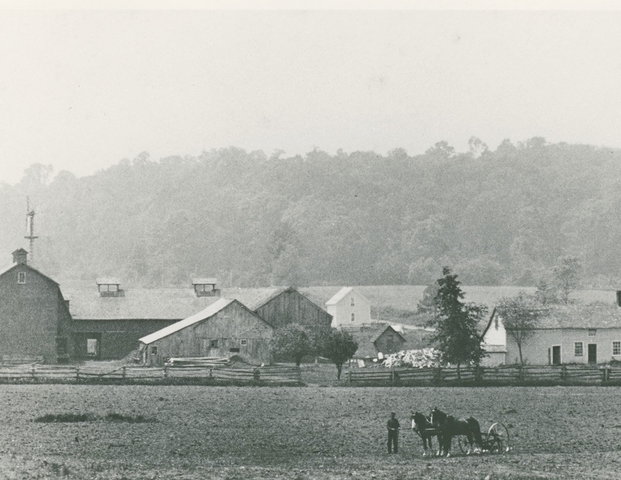
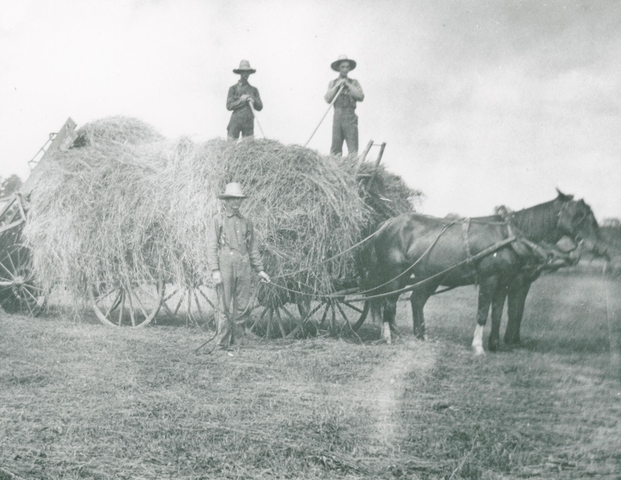
Celtic Cross and Irish labour
It has been recognized that Irish labour built the Rideau Canal. According to Rideau historian, Ken Watson, about half to two-thirds of the labour force that built the Canal were immigrant Irish. As such, the Celtic cross appears in several places throughout the township, but most prominently in Chaffey’s Lock. A large Celtic Cross stands near the community hall in Chaffey’s Lock, in memory and recognition of the canal workers who lost their lives building the Rideau Canal. In fact, a plaque at the cemetery nearby to honour Irish workers in Chaffey’s reads, “This half-acre cemetery became the final resting place for many Irish immigrants who died at Chaffey’s Mills during construction of the Rideau Canal. Chaffey’s Mills was one of several locks and canal construction sites where malaria, a disease not understood then, devastated the labour force. During the late summers of each year from 1828 to 1832 up to 95 per cent of the workers were stricken. Most of these Irish immigrants had no family or ties here… no record exists today of their names to enable us to honour them as individuals who helped build this country… this plaque is dedicated to the memory and contribution of those brave Irish immigrants.”
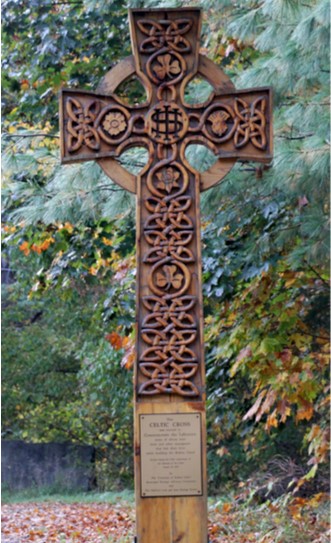 Photo by Maggie Fleming
Photo by Maggie Fleming
Irish Family Names of Rideau Lakes
Some familiar names in Rideau Lakes date back to the early 1800s and are Irish in origin! In the book, “Hub of the Rideau” by Susan Warren, we learn that the majority of European settlers to South Crosby in 1817 appear to have been Irish Protestant yeoman, many from the County Wexford. At least six local families including Shaw, Singleton, Jacobs, Leggett, and Stedmans arrived in 1818. The following year, the Sly and Cannon families arrived. By the mid-1820s, several more Irish families had put down roots in Rideau Lakes.
John Johnston, an Irish stonemason, was drawn by the construction of the Rideau Canal during the 1820s. The Youngs, Basses, Stouts, Cavanaghs and Morrises were all part of this second wave of immigration. These family names are still prominent in present-day Rideau Lakes. Explore more information and photos about Irish Roots of North Crosby.

John Draffin Manor
John Draffin came from Ireland to the Rideau Lakes in the mid-1850s and built a stunningly intricate and spacious house in Newboro around 1860. According to the Stone Manor Studios website and the Township’s history files, Draffin was a merchant who ran a successful general store on Main Street. The Manor house then served as a rectory for the Anglican Church until 1945. After being sold and enjoyed as a private residence for many years, it is now home to Stone Manor Studios, where the public can channel creativity at art retreats and workshops in the renovated carriage house.
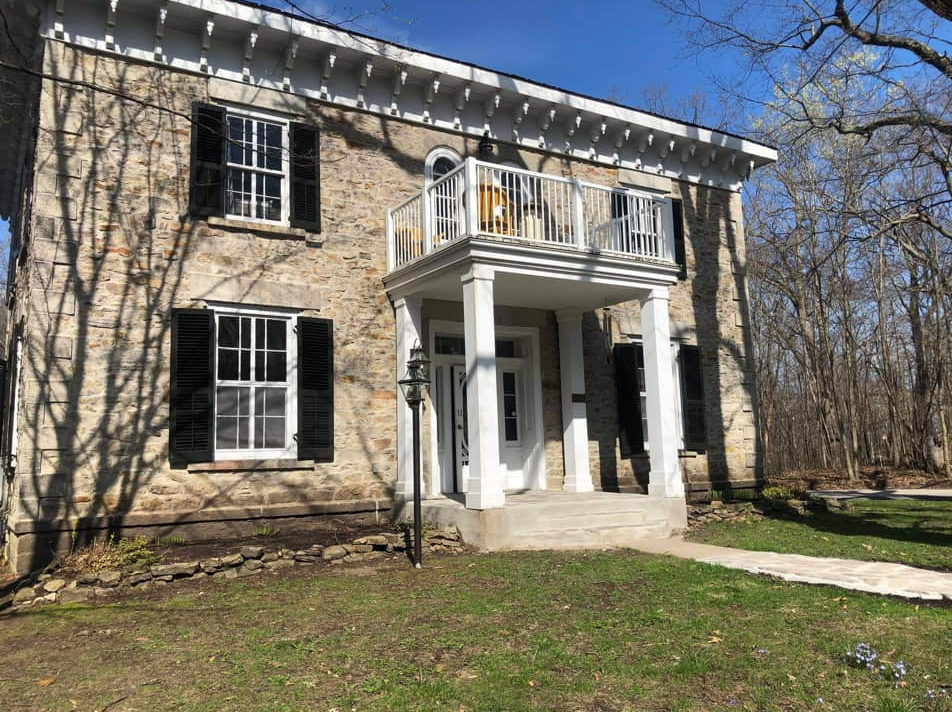
Memory Wall and Outdoor Chapel – Chaffeys Lock
Located at the entrance to Chaffeys Cemetery, the memory wall was erected by the Chaffey’s Lock and Area Heritage Society to commemorate the founding, building and continuing life of the community. Buried in this cemetery are Samuel Chaffey and his wife, Mary Ann as well as 79 individuals including Rideau Canal labourers, mostly Irish immigrants, who died in the construction of the Rideau Canal. The stones of the masonry wall hold plaques inscribed with the names of families who settled in this area.
Interested in learning more about the fascinating Irish history of Rideau Lakes? Check out the Rideau Lakes Historical Societies or visit the Rideau Lakes Public Library. Don’t forget to go green in Rideau Lakes this St. Patrick’s Day!
References:
http://www.rideau-info.com/canal/history/memorials.html
https://cmea-agmc.ca/rideau-sappers
https://www.rideaulakes.ca/experience/about/our-villages/north-crosby-westport-area






















